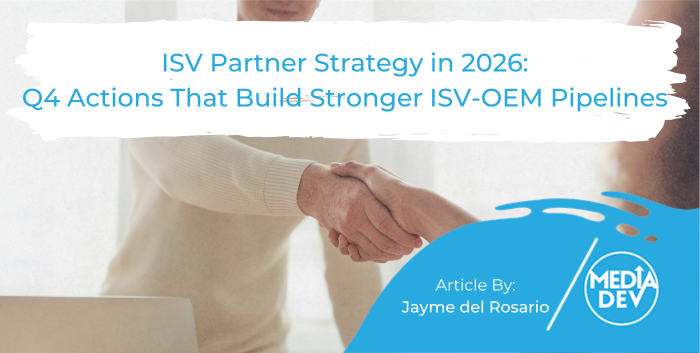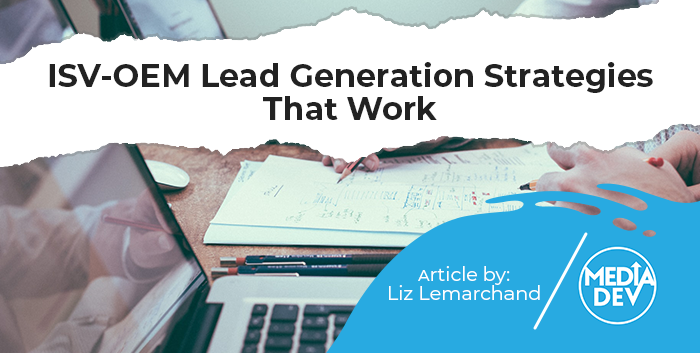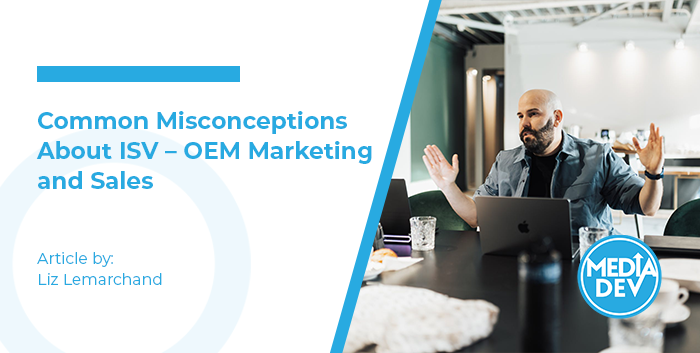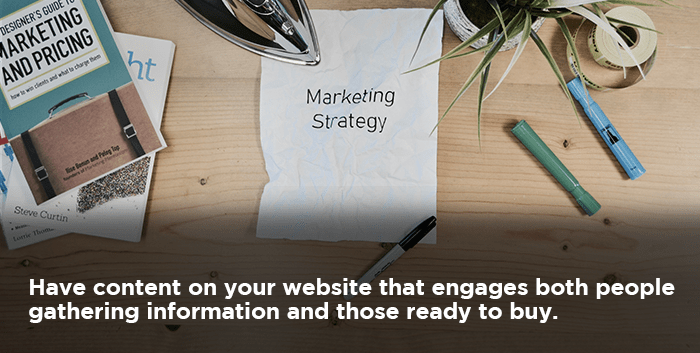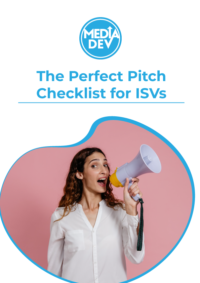Software companies seeking sustainable expansion increasingly turn to ISV–OEM partnerships as a strategic source of revenue. Done right, this model helps vendors embed, bundle, or co-deliver solutions via third-party platforms, widening reach and unlocking "sell-with" or "sell-through" revenue streams. But it's not easy — it demands clarity, patience, and orchestration. Below is a consolidated playbook drawing from MediaDev's ISV-to-ISV partnership thought leadership.
- Why ISV-OEM Matters (and What You Might Be Leaving on the Table)
Many software vendors are already selling to ISV customers but haven't fully explored the potential of turning that relationship into embedded offerings or OEM integrations. By exploring OEM pathways, vendors can:
- Extend their reach via partners rather than acquiring every end user directly
- Create recurring revenue streams via licensing, royalties, or shared services
- Cement stickiness, because as partners invest in your integration, switching becomes harder
- Leverage existing relationships: your installed ISV base becomes fertile ground to offer integration extensions or embedded features
However, many companies hesitate because they fear complexity, long sales cycles, or uncertain returns.
- Common Misconceptions That Stall ISV-OEM Success
To move forward, you first need to break through the limiting beliefs that are holding you back. Here are several commonly held beliefs and their anecdotes:
- "We can't outsource ISV–OEM lead generation." Actually, with the right agency, it's absolutely possible and highly efficient.
- "We can't find reliable ISV data." True if you rely on generic databases. Better to build a pipeline of accounts and contacts based on your own criteria and clean segmentation rather than trusting opaque vendor lists.
- "Inbound leads are enough — we don't need outbound." Inbound is unpredictable. A proactive outbound engine ensures steadier flow and control over your pipeline.
By implementing these tips, teams can approach ISV-OEM with a healthier, more realistic mindset.
- Laying the Foundation: Identifying Ideal ISV Prospects
One of the biggest difficulties in ISV-OEM partner recruitment is targeting the wrong types of potential partners. You need a "best-fit ISV" profile, instead of just going after any software vendor.
- Define the attributes of your ideal ISV: domain, tech stack compatibility, market reach, customer base, ownership of IP, willingness to embed or co-sell/bundle
- Use that definition as a filter when evaluating data providers or building your lead pool
- Aim for vertical or feature-fit alignment first, not just scale
- Ask: does the ISV's roadmap align? Are they motivated to partner, or see you as a threat?
This upfront rigor saves time in the long run.
After identifying the right target ISVs, the next challenge is filling the pipeline. We always recommend taking a holistic, always-on strategy instead of a quarterly approach:
- Content Audit & Persona-Centric Messaging
Tailor content specifically to ISV decision makers (Head of Product) rather than generic end-user content. Use cases, success stories, technical deep dives, and webinars that demonstrate the value you provide to your partners is key.
- Always-On Programs
Don't treat ISV-OEM campaigns as one-offs. Build evergreen campaigns that nurture prospects over months. Adjust cadence based on performance.
- Omni-Channel Engagement
Combine cold calling, email, social (especially LinkedIn), events, and retargeting. Each channel reinforces the others.
- Dedicated LinkedIn Showcase / ISV Channel Hub
Establish a partner- or ISV-focused page where you post relevant content, success stories, feature updates, joint webinars. This helps build credibility and keep partners engaged.
- Sales Rep Enablement in ISV Context
Equip reps not just with technical specs, but with business narratives: cost savings, ROI, integration benefits. Ensure they can shift from "feature talk" to "value talk."
- Data Challenges & How to Get Clean ISV Insight
One of the challenges in ISV-OEM marketing is the difficulty of acquiring high-quality ISV data. Here's how to address that:
- Always verify a data provider's definition of ISV. If they can't explain it, avoid working with them.
- Test with small, paid samples rather than accepting generic "free lists." This reveals match quality upfront.
- Prefer data build campaigns: generate your own lists through prospecting, filtering, outreach, and verification
- Audit vendor credibility: check case studies, use references, look for prior ISV-OEM experience
The goal is a pipeline of clean, qualified, actionable ISV accounts, not massive but noisy lists.
- Navigating the Long Sales Cycle
Embedded or ISV-OEM partnerships often involve extended cycles — 9–18 months or more, especially for deep integrations. To manage this:
- Build a multi-stage funnel for ISV leads, with distinct checkpoints (interest → technical discovery → prototyping → deal negotiation)
- Never let top-of-funnel leads go cold — maintain communication via content, check-ins, small value-adds
- Use pilot or proof-of-concept programs to reduce friction and validate ROI iteratively
- Engage both business and technical stakeholders early; don't leave one side behind
- Expect some attrition — not all ISVs will convert — so maintain volume upstream
Patience plus consistent nurturing is the formula.
- Measures of Success & ROI
To know the program is working, monitor:
Lead/Opportunity metrics
- Number of ISV leads generated
- Conversion rates at each funnel stage
- Time-to-next-stage (velocity)
Partnership metrics - Signed ISV-OEM agreements
- Activation or integration rate (how many onboard)
- Revenue per partner (license fees, royalties, services)
Engagement metrics - Partner usage (how often they call your APIs, embed modules)
- Co-marketing or joint sales activity
- Partner satisfaction / retention
Use these metrics to iterate and prune underperforming segments.
- Putting It All Together: An OEM Launch Checklist
Below is a distilled checklist for vendors getting started:
| Phase | Focus | Key Activities |
| Strategy |
Define goals & alignment |
Determine which ISV-OEM model (embed, resell, co-sell), revenue sharing, target ISV profiles |
|
Data & Prospecting |
Build the pipeline |
Define ISV criteria; test data samples; launch data build campaigns |
|
Content & Messaging |
Engage ISV personas |
Develop ISV-specific content, success stories, technical assets |
| Outreach |
Generate leads |
Deploy omni-channel campaigns, always-on nurture, LinkedIn showcase |
| Enablement |
Equip sales and partners |
Train internal reps; create partner guides, API docs, integration toolkits |
|
Exploration & Iteration |
Pilot & test |
Launch small POCs or beta integrations; gather feedback; adjust program |
| Scaling |
Roll out broadly |
Onboard more partners; co-market; refine incentive models; measure ROI |
Conclusion
ISV–OEM partnerships have the potential to shift your software business from a direct-sell model into a scalable, partner-driven engine. But success requires more than wishful thinking. You need:
- Sharp clarity on which ISVs are your ideal partners
- Clean, qualified data
- A persistent, omni-channel lead engine
- Sales teams equipped to speak business and tech
- A long-term mindset to nurture deals over many months
If you build the foundation deliberately, the rewards are compelling: a diversified revenue stream, deeper adoption, and amplification via partner ecosystems.



